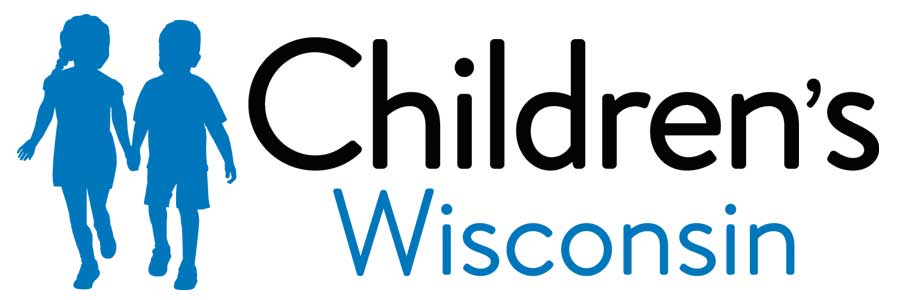Torticollis Right head tilt left head turn L3 exercise program (2073)
Key points below
Level Three exercise program
These exercises and activities are for the older baby or toddler with torticollis. Only do these exercises if a physical therapist has talked to you about them. Call (414) 266-2858 with any questions or concerns.
Note: It is important for you to lay your baby on his tummy several times per day while awake and supervised. This is called “Tummy Time.” By the time they are 4 months old your baby should spend a total of 2 hours of time on their tummy per day.
Do the following exercises every day. Use very gentle pressure to stretch, and only do stretches when your baby is happy and calm. Stop stretching and try again later if your baby resists the stretch.
 |
Sit to hands and knees Start with your child in a sitting position. Bend your child’s right knee and put their right hand on the floor. Put your left hand on child’s left hip, your right hand on chest. Slowly turn the child’s trunk towards the right. Help your child into a hands and knees position. In hands and knees, work on forward/backward rocking and weight bearing through arms.
|
|
|
Hands and knees Put your child on hands and knees over a towel roll, boppy pillow or your leg. Help your child shift their weight from side to side to reach for a toy. Help your child move their arms and legs to crawl. Put colorful toys in front of your child to get them to reach or crawl forward. |
 |
Sit and reach up Help your child to bring their hands together in the middle. Have them reach overhead while sitting or kneeling. |
 |
Kneeling Put your child on their knees with a firm pillow or small bench in from of them. Have your child push on the bench with their arms. As balance improves, try to get your child to reach up and to the sides or have your child kneel without arm support.
|
 |
Pull to stand Help your child pull to stand leading with the left foot. Gently hold down the right leg and help your child lean right. Guide the left foot up to be the leading foot, bending at hip and knee.
|
 |
Standing weight shift While your child is standing, help shift their weight from side to side. Try to get your child to reach sideways for toys.
|
 |
Cruising Help your child shift weight to one leg and lift the other leg up to walk sideways next to the couch or a coffee table. Have your child cruise to the right and the left. Start out cruising next to a surface that is chest high to your baby.
Side bending Try to get your child to side bend to the right to reach for objects placed at their hip height on the right side. Look for an active head tilt to the left with no turn when standing up. |
 |
Walking with cart Help your child walk behind a sturdy walking toy such as a small grocery cart. You may need to add some weight to the toy to slow it down. Your child’s toes should point forward and their head should be straight (not tilted).
|
Simple changes that can help your baby’s progress
Try to get your baby to look to the right by putting the car seat or seat swing so that the activity in the room is to the right of your child.
- Have your child lay on their right side to play.
- When feeding your baby, position you and the baby to encourage head turning to the right. Your baby’s head should not be tilted when feeding.
- When holding your baby upright at your shoulder, hold them on the shoulder that makes your baby look to the right.
- When cradling your baby, you can work on positioning them with their hands and trunk in the middle.
- Use a front carrier to carry your baby.
- Limit the time spent in a bouncy chair or flat on their back and head while awake.
Illustrations courtesy:
Therapy Skill Builders Inc.
(3830 E Bellevue, PO Box 42050, Tucson AZ 85733)
Visual Health Information (PO Box 44646, Tacoma WA 98444)
VORT Corporation (PO Box 60132, Palo Alto, CA 94306)

